As with some of my other posts, this documents how we are using our SET-BC special project technology outside of our original proposal.
For those following our blog, you know that we use the Reading A-Z program in our class to support literacy development. In an earlier post I discussed the Clicker sets we've created to support the level a and aa books within this program. Today's post showcases an awesome tool for students reading level I stories from Reading A-Z.
Below are some screen shots of the level I story summary clicker set.
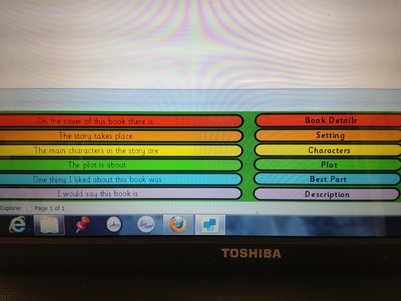
Students begin by inserting a title, their name and the date. Then they click on the red cell that begins with the phrase "On the cover of this book there is".
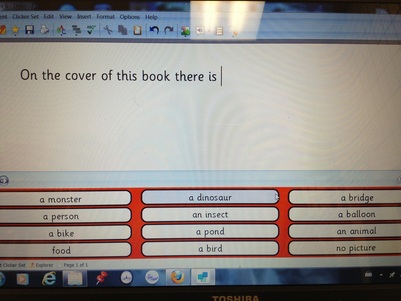
_Students then select the adjacent red "Book Details" cell that gives them a variety of choices that all correspond with pictures on the cover of all level I Reading A-Z books.
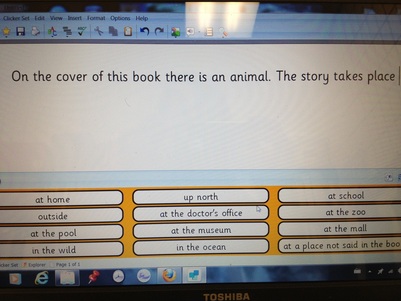
The clicker set then continues with prompts for the setting. Again, all choices reflect material found in all the level I books.
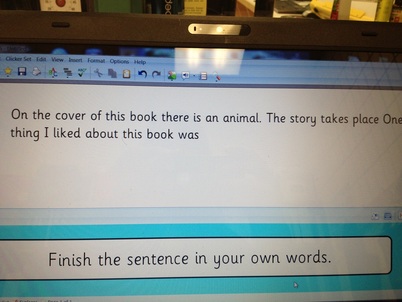
The most complicated prompt is "One thing I liked about this book was" as it requires students to finish the sentence in their own words.
Below is a sample completed by one of my students after they read the book "At the Zoo."
_All Reading A-Z resources will soon be available on the SET-BC website under The Learning Centre (curriculumSET) curriculum share.
This week we continued preaching the compost word with a second presentation to another foods class. Our clicker book was very well received and our guests totally rocked the interactive quiz at the end! We have collected about 8 litres of compost from the foods room since our first presentation! Our new but very ugly compost bin is working HARD and doing a great job at breaking down all the scraps we have been feeding it.
We also had the chance to learn more about plastic. For this concept I began with a clicker book I wrote on the topic followed by a clicker set to review the ideas discussed in the book. Below is the finished product after we went through the clicker set as a class.
This book and sorting activity can be found on the SET-BC website under The Learning Centre (curriculumSET) curriculum share.
After two planning sessions and twice as many practice runs, my students were ready to present their clicker book to a grade 12 foods class! It was an incredible process to watch my students put their own flare and personal touches into the presentation, making something I had created for them into something they could share with others.
We began with my students clicker book and then did a SMART notebook sorting game to "test" their knowledge. My students are excellent teachers as the foods students got 100%!
Below is a picture of our presentation; our classroom has never been so crowded!
This was a great success as it empowered my students to be leaders and it helped educate more students at VSS about how to compost successfully. Next week we will be learning about recyclable plastics - come back to check out our resources on Friday.
This week we began our preparations to present a clicker book about composting to the foods classes. As my students were familiar with the clicker book I created for them on composting, we decided to use that as the base for our presentation. Slide by slide we have been going through and looking at the words and pictures to decide if these are the messages and images they want to share with their peers. I was pleasantly surprised at how much ownership they wanted to take over the process - right down to resizing the pictures and text boxes! This means things are taking longer than I thought they would, but we still hope to be able to present by Tuesday. Stay tuned for pictures and an update on how things went!
In other news, we experimented with making our own homemade apple juice today. We received our third shipment of apples through the BC School Fruit and Vegetable Nutrition Program and thought to expand our repertoire beyond applesauce. We had a great discussion about the difference between fresh and store bought apple juice and everyone enjoyed it (despite the fact that it was cloudy and brown - not clear and yellow). Fresh is best!
For a few months now (since my January 2013 blog post) we have been collecting compost and adding it to our awesome Jora composter. Now that the weather has warmed up, things are starting to break down and we can look at expanding our collection to include the foods and nutrition department.
In the next two weeks we plan to invite several foods and nutrition classes to our room to view the following Clicker book and sorting activity. It is our hope that we will be able to educate students so they know what can go into the compost and what cannot.
These are images of the first few pages of the Composting Clicker book.
The following are the first few pages of the Composting sorting activity.
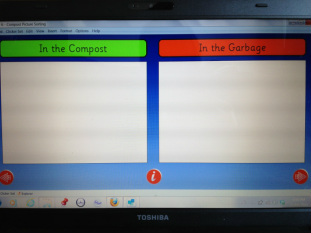
Students can select a "Practice" option or a "Test" option. In practice mode, incorrect responses cannot be selected; in test mode they can. On the first page there are two categories to put images in.
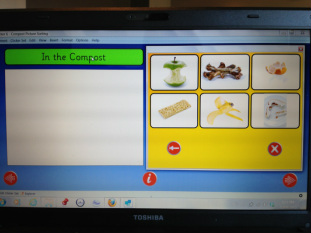
Students then click on the title box "In the Compost" or "In the Garbage" and 6 pictures will appear (3 items that can be composted and 3 that cannot). They then click on the image and it appears in the box below the title. There are multiple activity pages, all with different pictures. When students are complete, you can print the set to document their level of understanding.
_This book and sorting activity can be found on the SET-BC website under The Learning Centre (curriculumSET) curriculum share.
These were the words one of my reluctant writers asked me a little while after he became used to using clicker 6. While this student could write and spell fairly well, his penmanship was a bit random and his stories consisted mostly of pictures. Here is one of his illustrations:
And THIS is what he was able to create using clicker 6 software! He relied heavily on the use of the word predictor and the only adult support he received was in the proper use of quotation marks for speech and the placement of the occasional punctuation mark. The storyline is his entirely, as are the illustrations and their placements within the story.
This young author has several other stories on the go that I hope to share
Lately we have been working on learning more about the recycling process. As a baseline, my students understood that recycling was a school job we did on Wednesdays and Fridays. We would collect all the bottles, cans and juice boxes we found in the school, sort and then count them. Twice a month we would take them to the bottle depot and get money for our items. We would also collect all the paper we found through the school and put it into the yellow bin outside our school. Beyond that my students didn't know too much about what they were recycling and why.
I created a clicker 6 book called "Recycling" and an accompanying activity called "What I Learned About Recycling". Both files are too large to load here, but they will be available on the SET-BC website under The Learning Centre (curriculumSET). However, you are able to see the final product of these two items in the document shown below. This is the completed document RK created after reading the book "Recycling" and using the clicker set "What I Learned About Recycling."
We've had a lot of success with using Clicker 6 to help write daily journals. With the arrival of our SMART board we have started using Clicker to write a morning journal as a class. About half the class also does an additional independent journal entry each day and one works on his stories every day during free time (stay tuned for his latest and greatest adventure: "Kenny Becomes a Policeman").
Sadly I am unable to post videos to this site without paying for it, so here are a few photos of students coming up to the SMART board for their portion of the morning calendar routine.
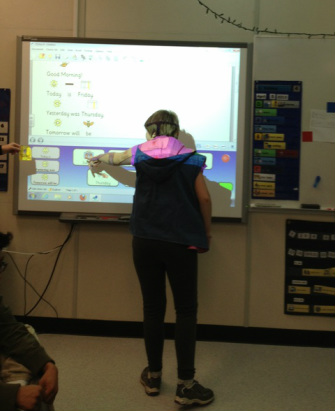
This student is completing the phrases "today is . . . yesterday was . . . tomorrow will be . . . "
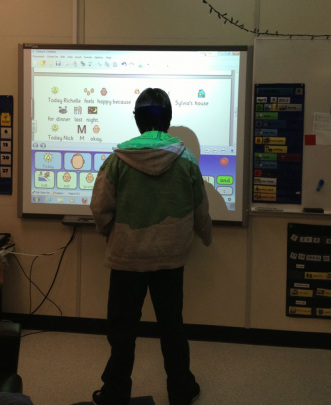
This student is selecting his name from a pop up and telling the rest of the class how he is feeling today. Some students ask me to add to their sentence with specific details that pertain to the current day and they enjoy helping by trying to find the correct word from the word predictor. A few students are even able to come to the computer and type these "add on's" with minimal support.
Below is our completed class journal from today. The format was altered slightly in saving the Clicker document as a word document for export. In Clicker all images are presented directly above the word, rather than to the right. If you are unable to view the embedded document, please try one of the file links below.

| class_journal_april_5_-_set_blog.pdf |
| File Size: | 677 kb |
| File Type: | pdf |
Download File

| class_journal_april_5_-_set_blog.docx |
| File Size: | 351 kb |
| File Type: | docx |
Download File
Our SMART board finally arrived last week! Better late than never :)
My administration pulled some strings to have our board installed right away (hooray for "Code Blue!") and we were able to use it the very next day for an exciting presentation by a former Valleyview Life Skills student. While not directly related to our SET-BC project, it was pretty cool to see a former student come back to the class and be able to use technology that was not there when he attended to share information with current students.
Here are a few pictures of Krystian Shaw delivering his presentation on the Access to Entertainment card to my class. Krystian works with Easter Seals Canada to tell people about the Access program which allows support personnel to join their clients at venues at little or no cost.
Staff and students are also very familiar with the clicker software now and within 2 days we were able to do an interactive daily journal on our SMART board. Building this routine in to our day is allowing students to become more comfortable interacting with the SMART board and is paving the way for our presentations about recycling and composting. Stay tuned for pictures and videos of our new morning routine!
At the end of January we received our first shipment of apples as part of our involvement in the BC School Fruit and Vegetable program. Our students were responsible for receiving the fruit, discarding damaged produce, washing each apple, counting enough for every classroom in the school and then delivering this healthy snack to each room. Here are some hardworking students counting and cleaning apples.
The apples were greatly appreciated in the school and our class has received many thanks for their help in providing this nutritious snack to their peers. We ended up with about 100 extra apples and decided to make applesauce with them. We figure that by the late spring time we will have made and frozen enough applesauce to do a unit on food preservation and can the applesauce for a fundraiser.
It has been very rewarding to watch my students gain skills and be valued by their peers!




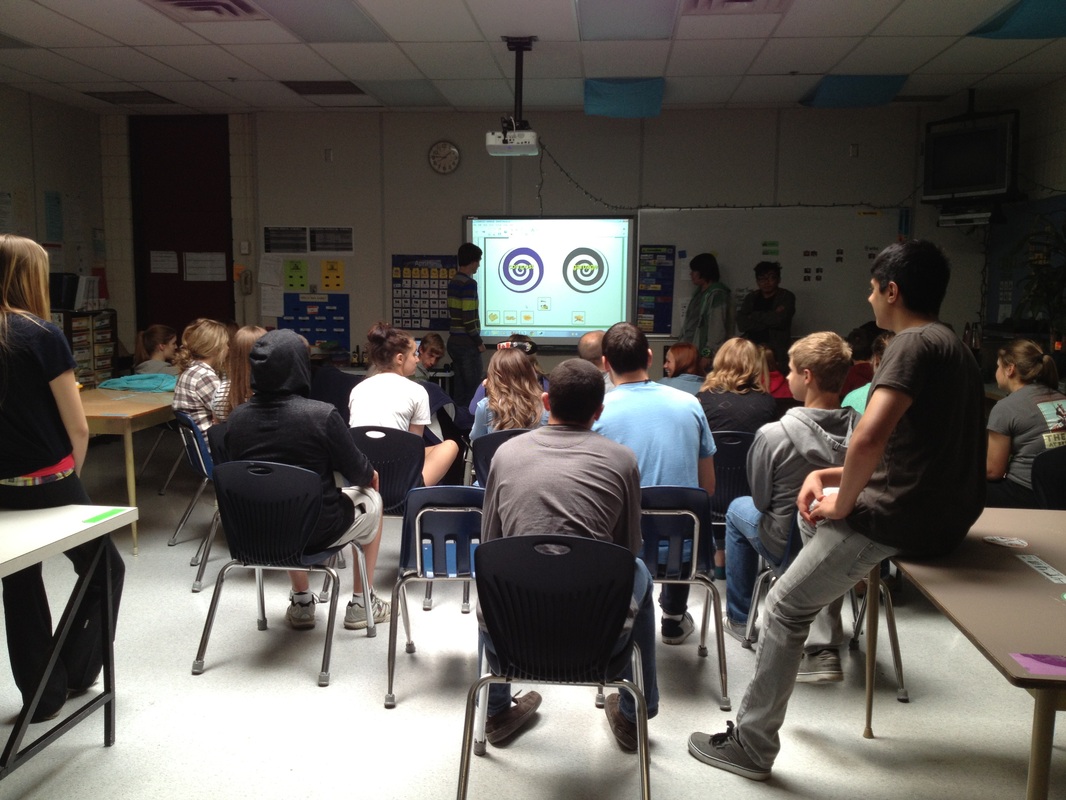
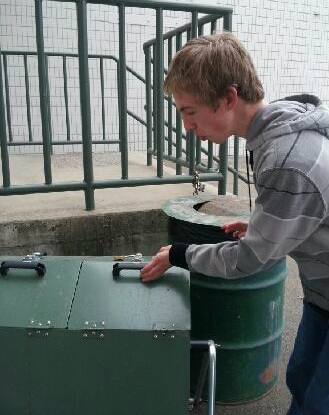
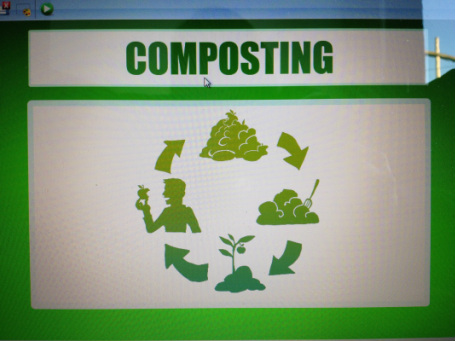
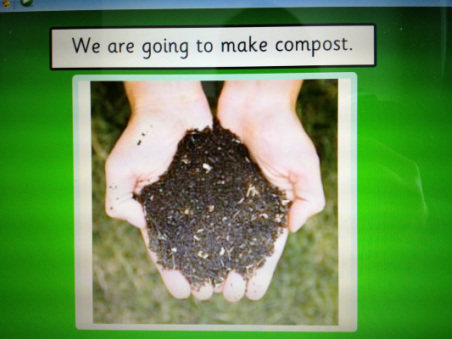
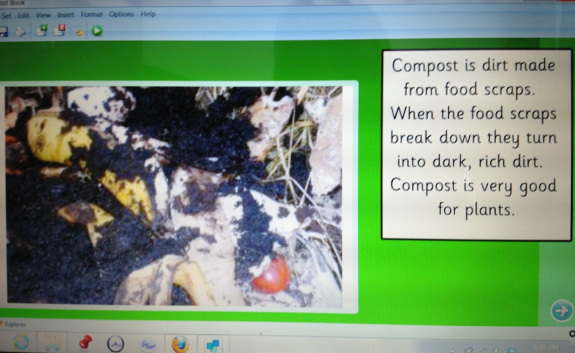




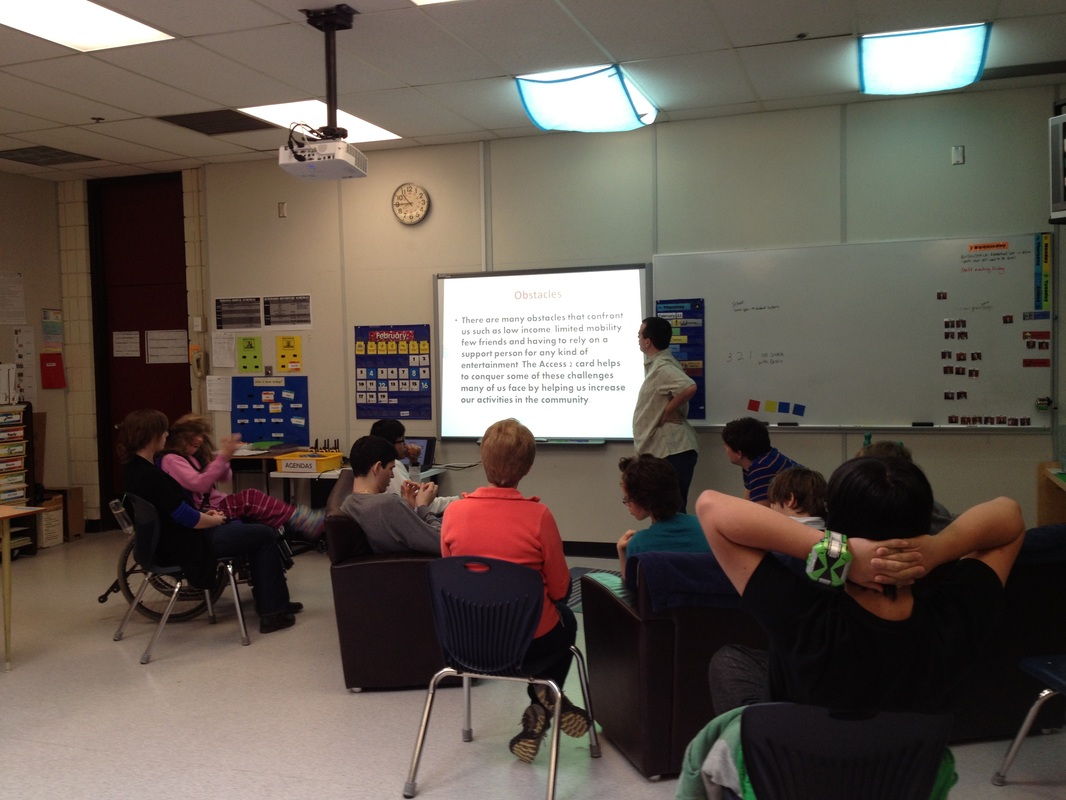
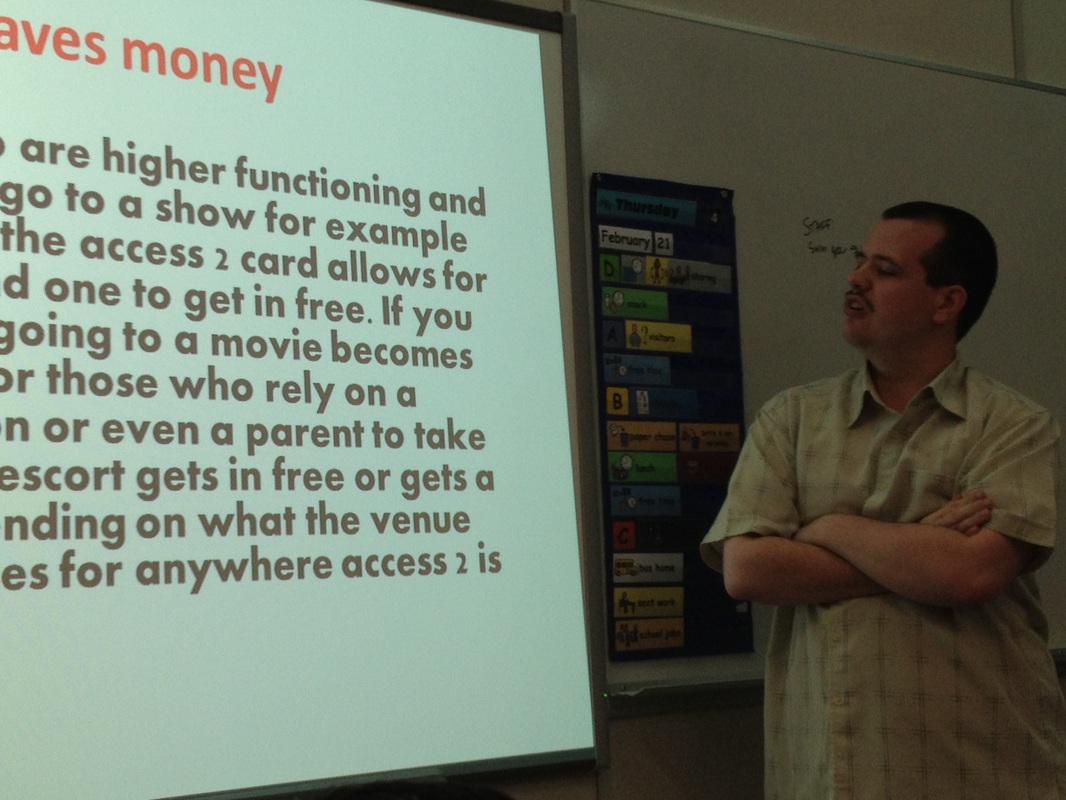
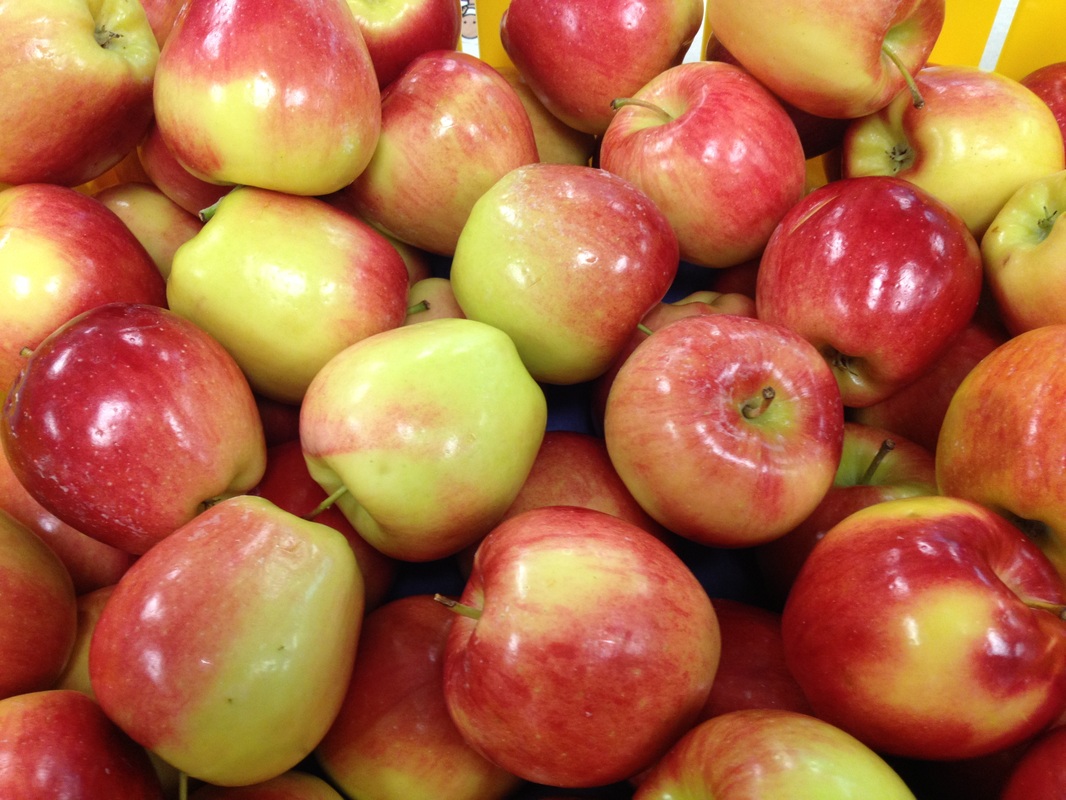
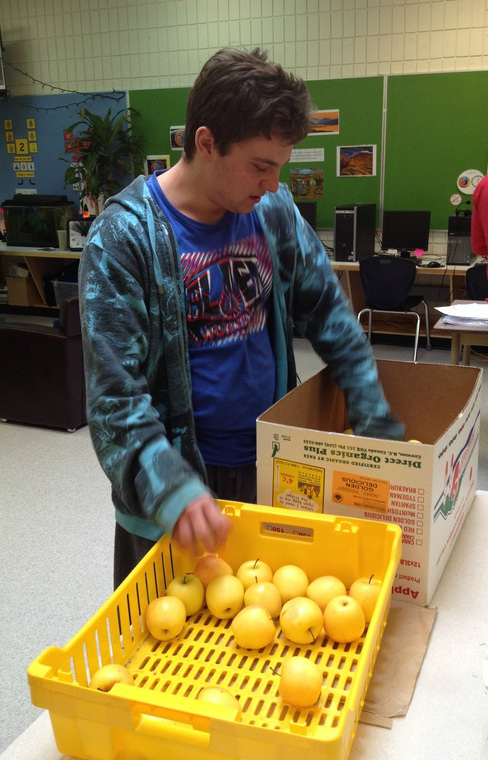
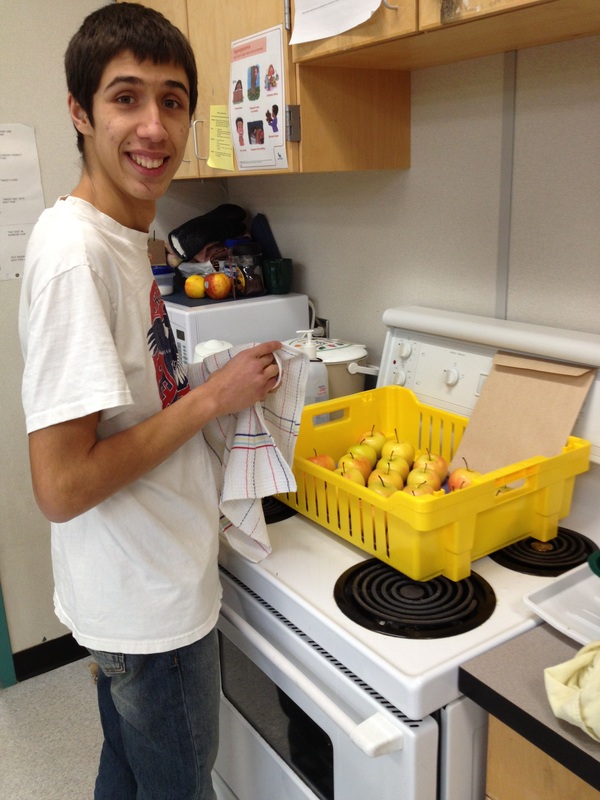
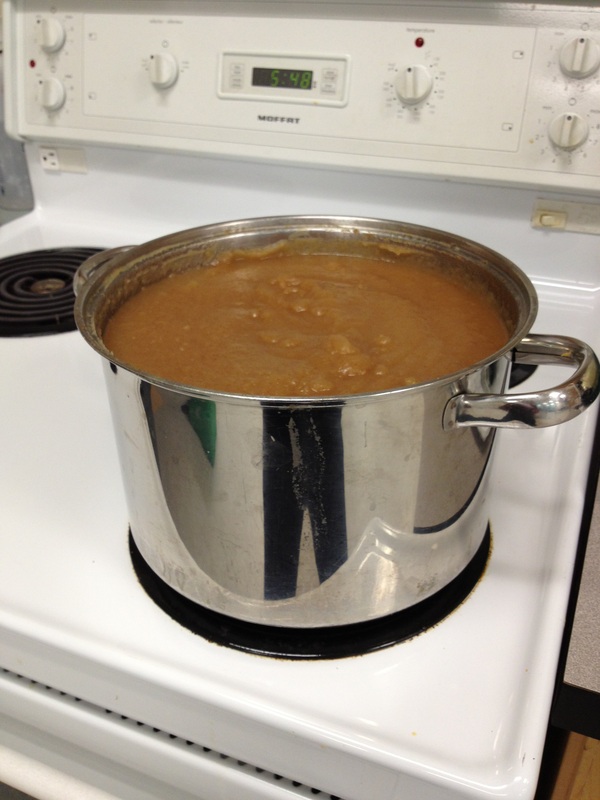
 RSS Feed
RSS Feed